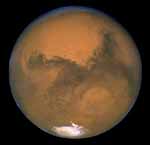|
|
| Find Water on Moon
Scientists at Brown University and other research institutions announced Thursday that they have found evidence of water molecules on the surface of the moon. The findings will be published Friday in journal Science. India’s Chandrayaan moon mission, before dying an early death last August, captured enough infrared images in one of its equipment to finally confirm that there is water on the Moon. Water exists on many bodies in our solar system, both planets and their numerous moons. But finding it on our own moon is breathtaking, both, from a practical and theoretical point of view. It adds to our knowledge of how cosmic processes work. And, it may open the way to utilizing the water on moon for making hydrogen and oxygen — the first needed for fuel and the second for life. Thus the possibility of using the Moon as a base camp for space exploration inches a wee bit closer. What about moon-life? The mere existence of water does not lead to any strong possibility of life existing on Moon, although more study will be needed to see if in the past, some simple life-like forms could have evolved. With almost no atmosphere, constant exposure to high energy solar winds, extreme temperatures, and repeatedly a victim of cosmic hit-and-run, the likelihood is remote. As our most prominent and nearest celestial neighbour, the Moon has been subject to a very close investigation from the beginning of space exploration half a century ago. It was also the first celestial body where man landed in 1969. Most of the early explorations appeared to confirm that the Moon was a dry rocky body. With its gravity only one-sixth that of earth, it has no atmosphere — the envelope of gases and water vapour that surrounds the earth and many other bodies in the universe. As a result, any water would have long been lost in space. Or so it was thought. This consensus of a barren, waterless Moon came under increasing doubt, starting with the 1994 Clementine mission, followed by the Cassini flyby in 1999 and the Lunar Reconnaissance Observer in 2008. But, Chandrayaan’s observations have finally clinched the issue. The molecules and hydroxyl -- a molecule consisting of one oxygen atom and one hydrogen atom -- were discovered across the entire surface of earth's nearest celestial neighbor. While the abundances are not precisely known, as much as 1,000 water molecule parts-per-million could be in the lunar soil: harvesting one ton of the top layer of the moon's surface would yield as much as 32 ounces of water, according to scientists involved in the discovery. Carle Pieters, a planetary geologist at Brown, is the lead author of one paper this week in Science that reports evidence of water in the moon's high latitudes -- greatly expanding current thinking about where water in any form was presumed to be located. "We've made a very important step with this discovery, and now there are some very important steps to follow up on," Pieters said. Professor of Geological Sciences Pieters is the lead investigator on the Moon Mineralogy Mapper (M3), a NASA instrument that was carried into space on Oct. 22, 2008, aboard the Indian Space Research Organization's Chandrayaan-1 spacecraft. She said the findings from M3 reveal interesting, new questions about where the water molecules come from and where they may be going. Scientists have speculated that water molecules may migrate from non-polar regions of the moon to the poles, where they are stored as ice in ultra-frigid pockets of craters that never receive sunlight. "If the water molecules are as mobile as we think they are -- even a fraction of them -- they provide a mechanism for getting water to those permanently shadowed craters," Pieters said. The M3 team found water molecules and hydroxyl at diverse areas of the sunlit region of the moon's surface, but the water signature appeared stronger at the moon's higher latitudes. From its perch in lunar orbit, M3's state-of-the-art spectrometer measured light reflecting off the moon's surface at infrared wavelengths, splitting the spectral colors of the lunar surface into small enough bits to reveal a new level of detail in surface composition. When the M3 science team analyzed data from the instrument, they found the wavelengths of light being absorbed were consistent with the absorption patterns for water molecules and hydroxyl. "For silicate bodies, such features are typically attributed to water and hydroxyl-bearing materials," Pieters said. "When we say 'water on the moon,' we are not talking about lakes, oceans or even puddles. Water on the moon means molecules of water and hydroxyl that interact with molecules of rock and dust specifically in the top millimeters of the moon's surface." The M3 discovery was confirmed
by data from two NASA spacecrafts -- the Visual and Infrared Mapping Spectrometer
(VIMS)on the Cassini spacecraft and the High-Resolution Infrared Imaging
Spectrometer on the EPOXI spacecraft. Data from those missions also are
being published in separate papers in Science.
|
|

|
| What is a Solar system |
| LUNAR COLLECTION | SOLAR COLLECTION | MARS | Home |
| India, New Delhi From Space |
|
|
|
|
|
|
|
|
|
|

Welcome to Swami Rajesh Chopra's |

|
( The Trade Marks Act, 1999, No. 01403083. User Since : 01/04/1997 ) All rights reserved. No part of this publication and other sites of under liveindia.com may be transmitted or reproduced in any form or by any means without prior permission from the publisher Live India Internet Services or Rajesh Chopra, L.C.Premium Cables, 1826, Amar Nath 2nd Building, Bhagirath Palace Delhi - 110006, India. Liveindia.com or Mr.Rajesh Chopra is not responsible for any wrong information under this site, For confirmation of any information it is recomended that you can reconfirm from yours end. |
 |